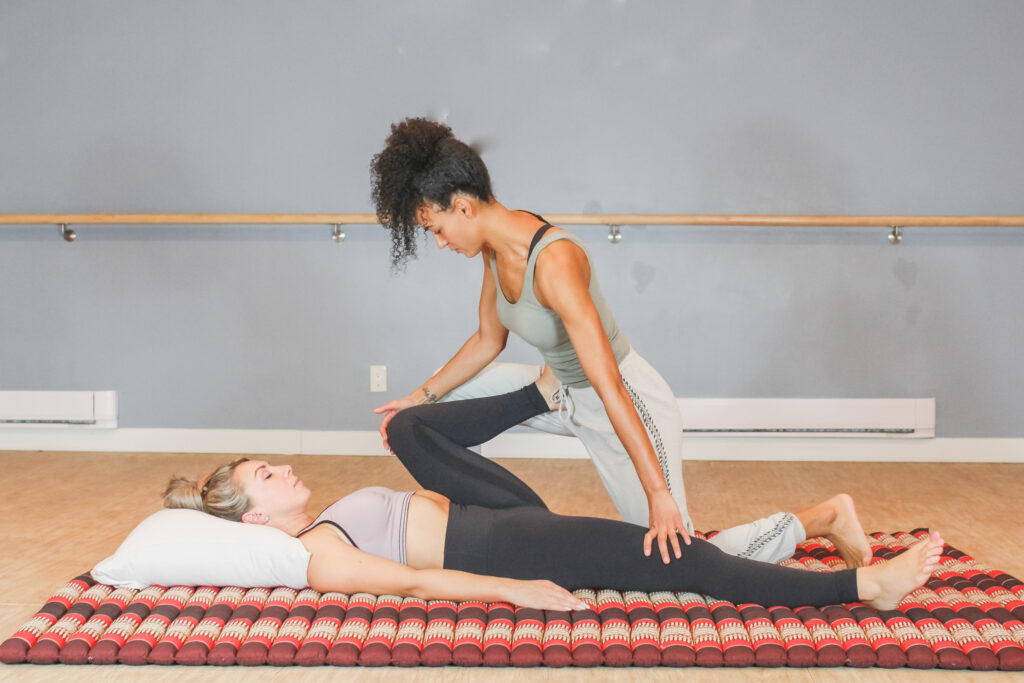
Thai Yoga sessions are the perfect way to customize your yoga practice while relaxing your muscles and increasing your range of motion. Thai Yoga incorporates traditional yoga poses, rhythmic rocking of the body, and massage therapy. It’s great for working through an injury, learning proper structure, how to prevent injuries, achieving advanced poses, or simply creating a yoga routine that will perfectly match your capacity and your goals.
60 min
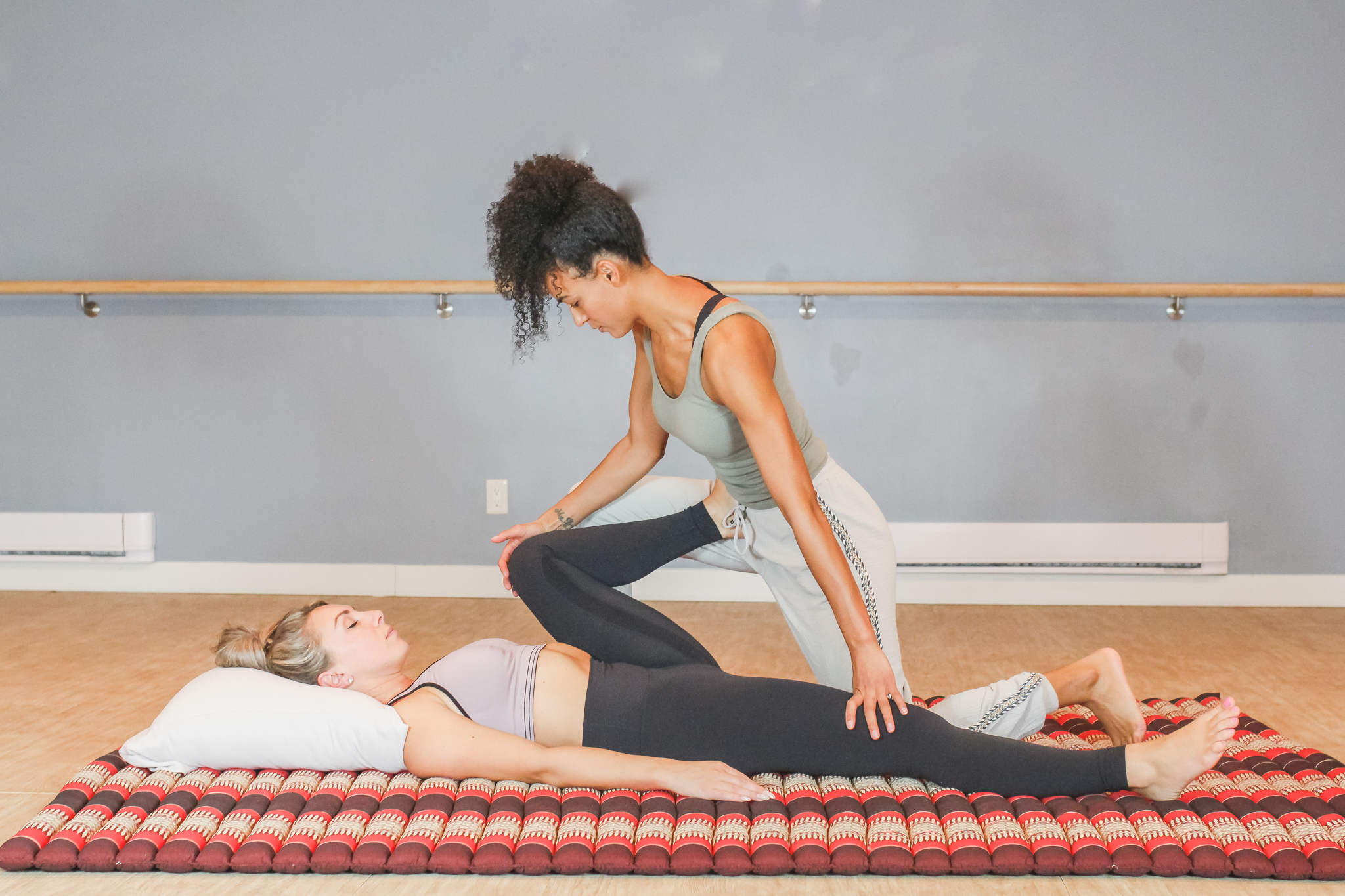

your first massage!
60 min
Direct Billing Available
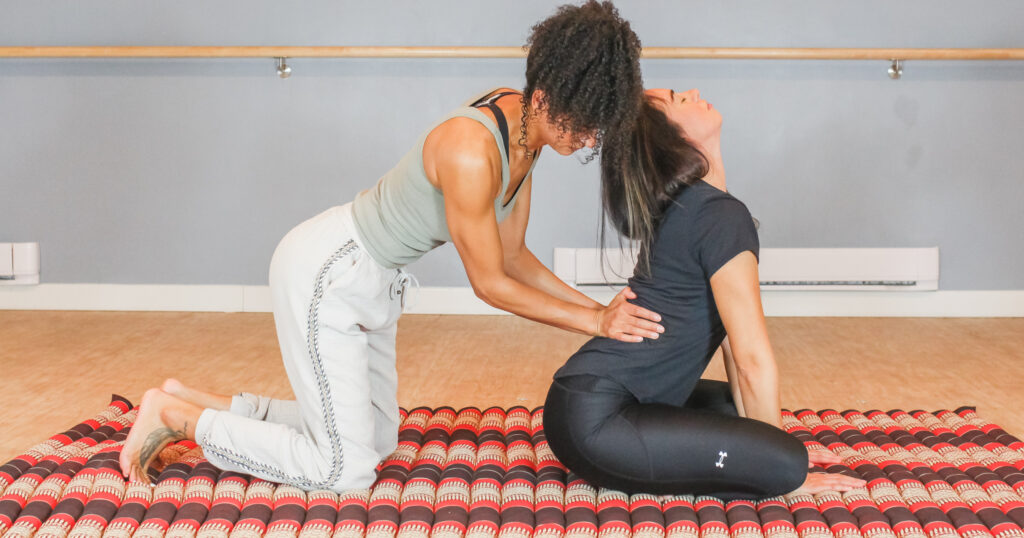
If you are new to yoga, have limited range of motion, general aches and pains, need to rehabilitate an injury, or just want to relax and relieve stress, Thai Yoga Sessions are the right service for you.
Your session will begin with a short assessment which may include ROM testing. Your instructor will go over your health history, any issues you want to address and your personal goals.
Each Thai yoga session will be tailored to focus on your specific needs and interests. Your instructor will assist your body through a series of traditional poses. They will utilize gentle rocking and incorporate massage to relax your muscles thus allowing you to achieve the correct structure and purpose of each pose. You will be guided through proper yogic breathing to get the most out of your practice. Thai yoga sessions will alleviate aches and pains while building strength and increasing flexibility. These sessions will also assist with healing from injuries and preventing future injuries.
After the session, you may feel relaxed and rejuvenated. It’s important to drink plenty of water to stay hydrated. Your instructor may also provide you with some aftercare advice, such as remedial exercises, stretching or self-massage techniques to help facilitate your progress.
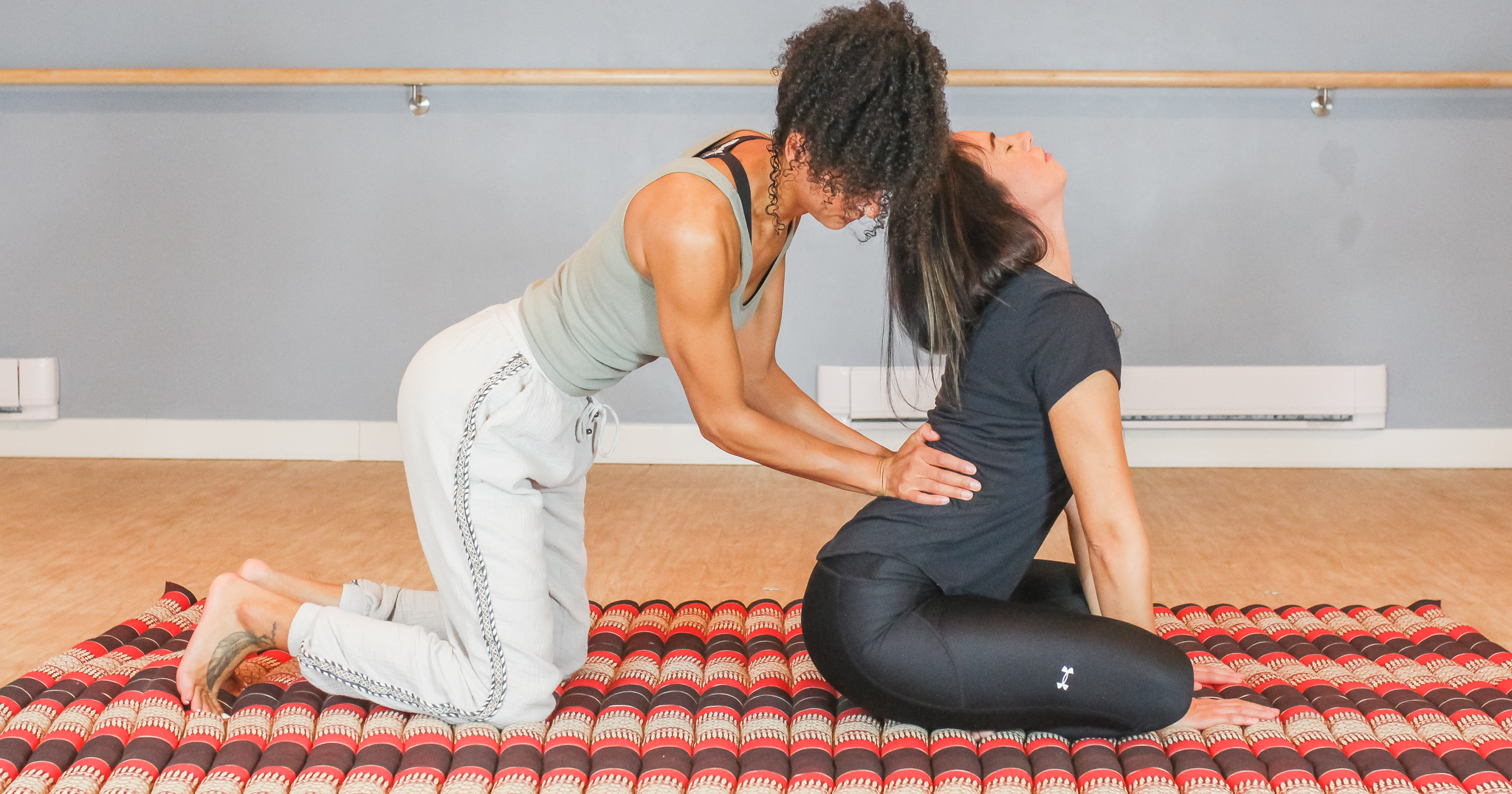
Please note – there are no refunds on Thai Yoga Session packages.
If you’re planning on getting a Thai Yoga Session, here are some important things to keep in mind:
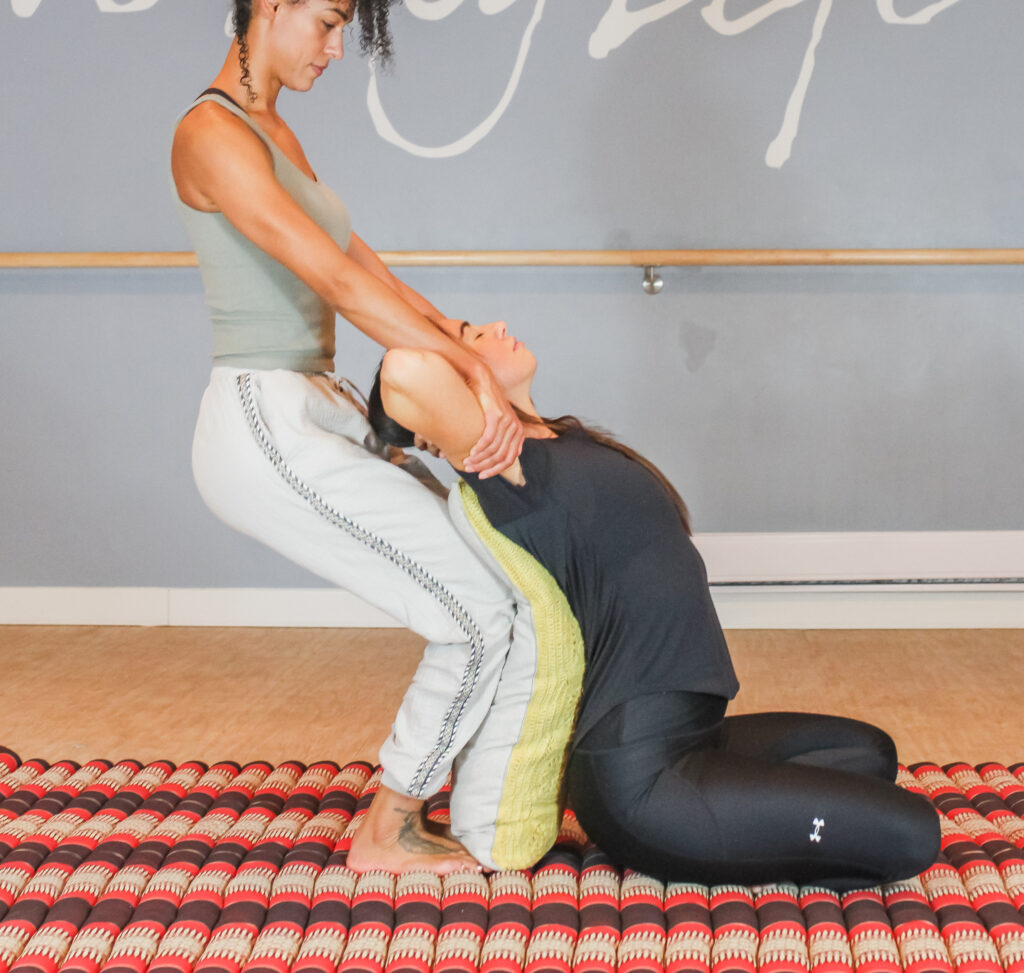
Click the BOOK NOW button to schedule your Myofascial Cupping Massage appointment today. Our registered Myofascial Cupping Massage therapists are ready to get you back to feeling your best.
The history of Thai yoga, also known as Nuad Bo Rarn, is believed to have originated over 2,500 years ago in India with the teachings of Buddha’s physician, Jivaka Kumar Bhaccha. Jivaka is said to have combined his knowledge of yoga, Ayurveda, and Buddhism to create a healing system that focused on balancing the body’s energy.
Over time, this system spread to other parts of Asia, including Thailand, where it was further developed and refined. Thai yoga became an integral part of Thai culture and was used to treat various ailments, including muscle tension, joint pain, and stress.
The first written record of Thai yoga was in the Pali Buddhist scriptures, which were written around 2,000 years ago. These scriptures describe the practice of “Luk Pra Kob,” a traditional Thai massage that used herbs and other natural remedies to treat various ailments.
In the late 19th and early 20th centuries, Thai yoga gained international attention when King Rama V of Thailand began to promote the practice to Westerners. He established a school of massage in Bangkok and sent his personal physician to France to teach Thai massage to Western doctors.
Today, Thai yoga is practiced around the world and has become increasingly popular as a form of alternative medicine. It continues to evolve as practitioners incorporate new techniques and adapt to the needs of their clients.
Thai yoga is a traditional healing art that combines yoga, massage, and meditation techniques. It originated in Thailand and is also known as “Nuad Bo Rarn” or “ancient massage.” It involves assisted stretching, acupressure, and rhythmic compression along energy lines in the body, resulting in a deep sense of relaxation and improved energy flow.
Thai yoga has numerous benefits for the body and mind. It can improve flexibility, range of motion, circulation, and overall physical performance. It can also reduce stress, anxiety, and depression, while promoting a sense of well-being and inner peace. Additionally, Thai yoga can improve digestion, boost immunity, and help to alleviate chronic pain and tension.
Thai yoga is different from traditional yoga in that it is a hands-on practice, where the practitioner uses their hands, feet, and elbows to apply pressure and stretch the client’s body. Traditional yoga, on the other hand, is a practice of postures and breathing exercises that are typically done on a mat. While both practices can be beneficial, Thai yoga offers a more interactive and personalized experience.
Thai yoga is generally safe and suitable for most people, but there are certain cases where caution should be exercised. If you have any underlying health conditions or injuries, it’s important to consult with a healthcare provider before trying Thai yoga. Additionally, if you are pregnant, it’s best to avoid Thai yoga in the first trimester and seek the advice of a prenatal yoga instructor.
Stay up to date with our latest news, receive exclusive deals, and more.